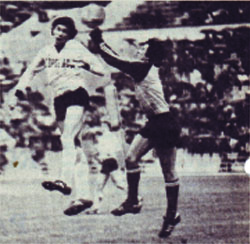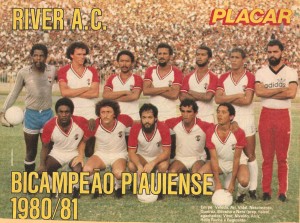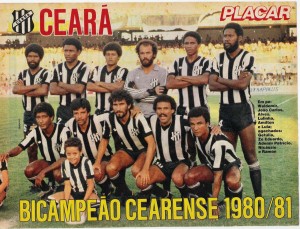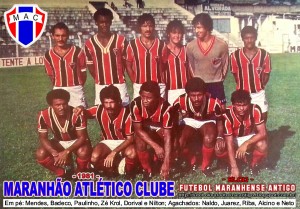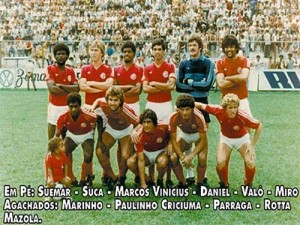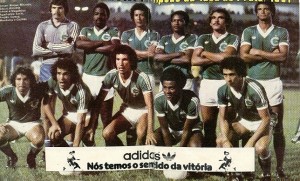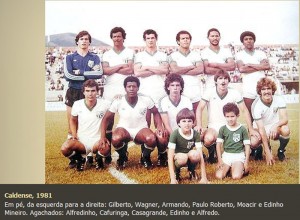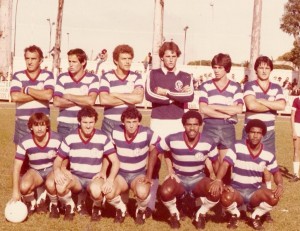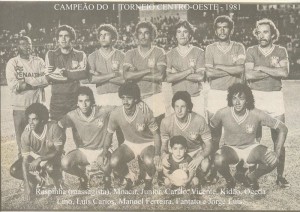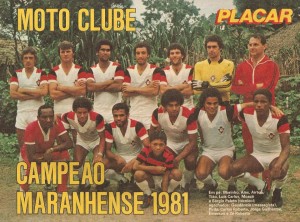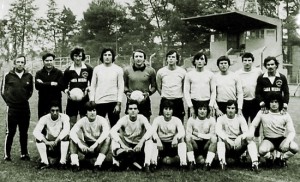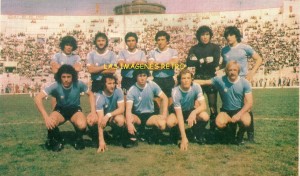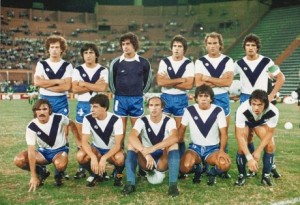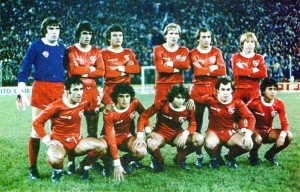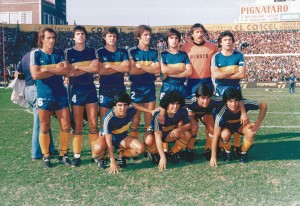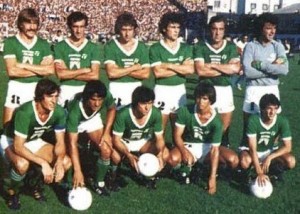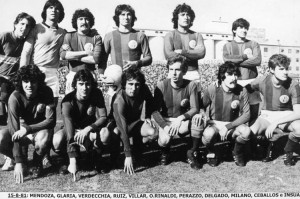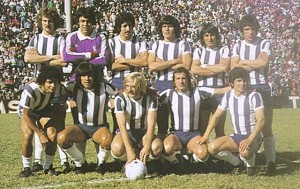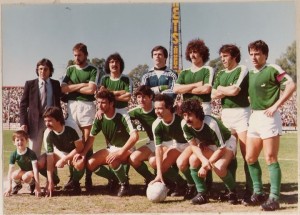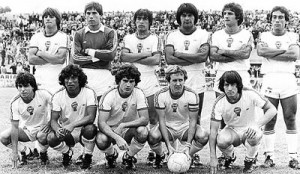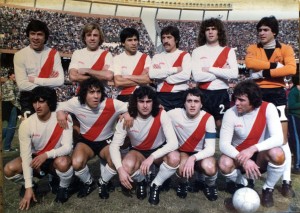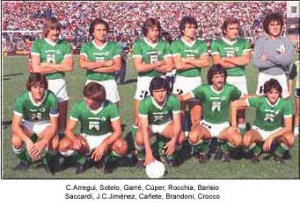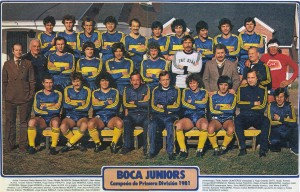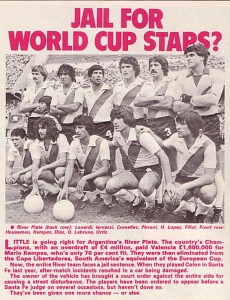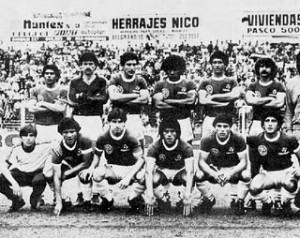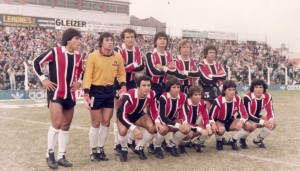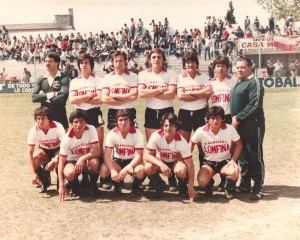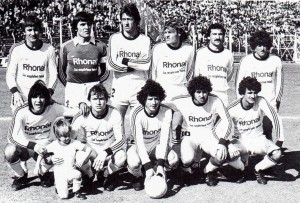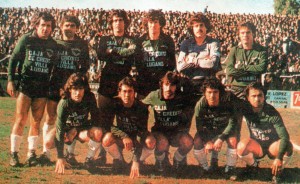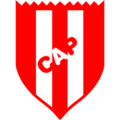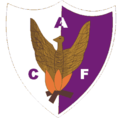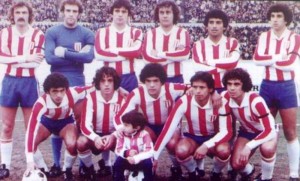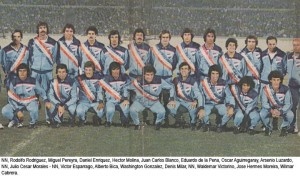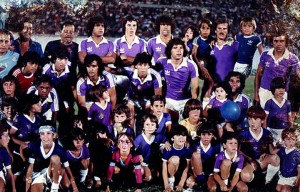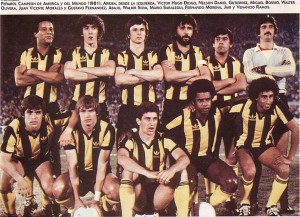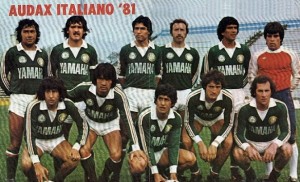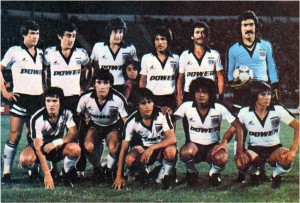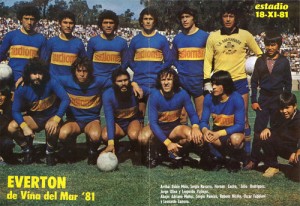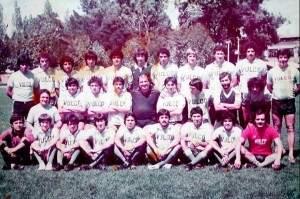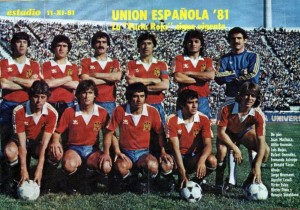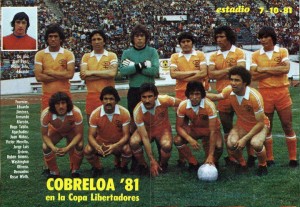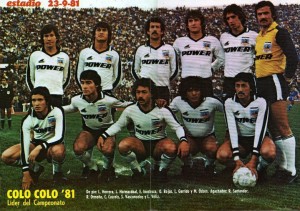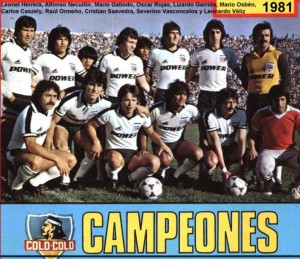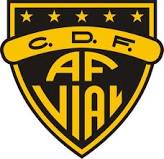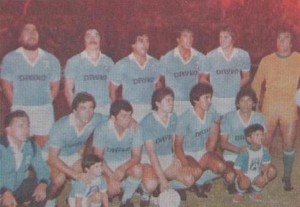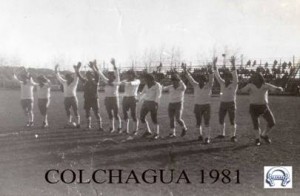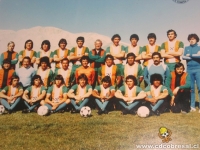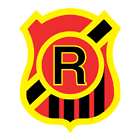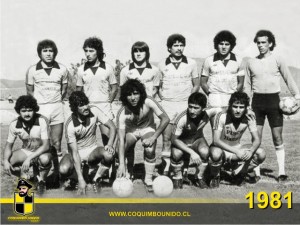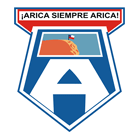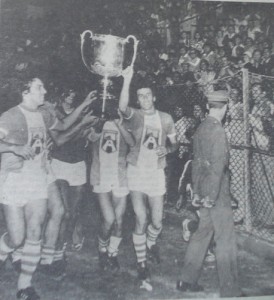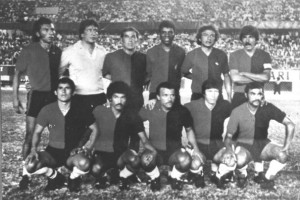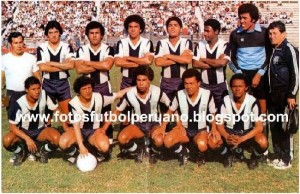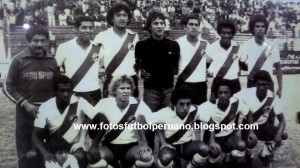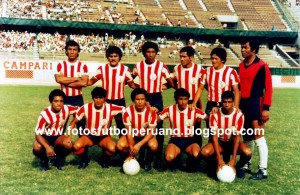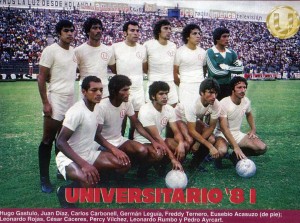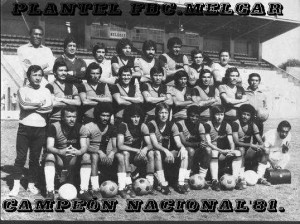The championship of Brazil, or Taca de Ouro, meandered step by step to its last stages of direct elimination. Rules should be mentioned: from the 1/8 on, if there was no winner after both legs, away goals or penalty-shoot out did not decide the winner, but the team with better record at the previous stage qualified. Strange rule. It benefited Ponte Preta against Vasco da Gama in the ¼ finals, when both matches ended 0-0. Flamengo was also eliminated at this stage, but Botafogo beat them without the help of the rule. But the semi-finals were decided only on that rule: Botafogo won their home match against Sao Paulo 1-0 and lost the second leg 2-3. Sao Paulo qualified, thanks to better ¼ final record. Ponte Preta lost at home to Gremio 2-3 and won the away match 1-0 , but Gremio had better ¼ fina; record than them. The final, deciding the 1981 champion of Brazil opposed Botafogo and Gremio.
So far, there were teams with various degrees of luck and form – the structure of the Brazilian championship hardly gave a clear picture of the real strength or weakness of many a club. In the so-called final table Londrina ended 42nd of 44 teams.
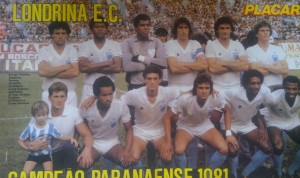 Londrina (Londrina) still won their state championship, but on national stage they finished very low – as it was expected. Similar clubs had similar fate:
Londrina (Londrina) still won their state championship, but on national stage they finished very low – as it was expected. Similar clubs had similar fate:
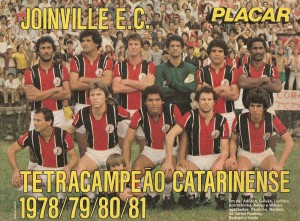 Joinville (Joinville – 39th. But some big clubs had either terrible year or tremendously bad luck.
Joinville (Joinville – 39th. But some big clubs had either terrible year or tremendously bad luck.
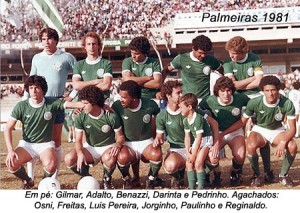 Palmeiras ended 31st – it was no longer the mighty team they had not long ago, but that bad? Or were they just unlucky? Palmeiras did not even reach the second stage of the long championship.
Palmeiras ended 31st – it was no longer the mighty team they had not long ago, but that bad? Or were they just unlucky? Palmeiras did not even reach the second stage of the long championship.
Corinthians moved ahead for awhile, but may be they were the biggest disappointment at the end.
 Paulo Cesar Caju, Ze Maria, Zenon, Biro-Biro, Gomes… and the new genius, already becoming a world class superstar, Socrates. 26th at the end…
Paulo Cesar Caju, Ze Maria, Zenon, Biro-Biro, Gomes… and the new genius, already becoming a world class superstar, Socrates. 26th at the end…
It was the other way around for some clubs – the ‘second tier’ Brazilian clubs performed well this year – no miracles and not going very far, but at least maintaining the level they were supposed to be on. Nautico, Bahia, Santa Cruz, Portugueza, even Bangu. Perhaps CSA (Maceio) were most pleasant surprise.
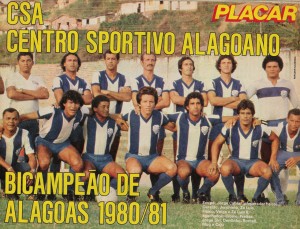 Like Londrina, they earned promotion to First level by reaching the final of Second level in 1980. But unlike Londrina, they played very well in 1981 – and finished 13th. Yet, they were unable to go beyond the 1/8 finals. The only other smaller clubs at this stage were Ponte Preta and Operario. Both moved ahead.
Like Londrina, they earned promotion to First level by reaching the final of Second level in 1980. But unlike Londrina, they played very well in 1981 – and finished 13th. Yet, they were unable to go beyond the 1/8 finals. The only other smaller clubs at this stage were Ponte Preta and Operario. Both moved ahead.
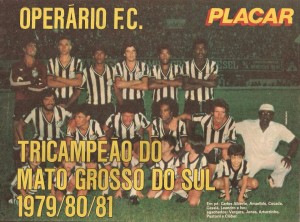 Operario (Campo Grande) did very well this year, but they face Gremio in the ¼ finals and lost both matches. No shame in it – Zico’s Flamengo was eliminated at this point too.
Operario (Campo Grande) did very well this year, but they face Gremio in the ¼ finals and lost both matches. No shame in it – Zico’s Flamengo was eliminated at this point too.
Gremio was the bad luck for the small teams – after eliminating Operario, they met Ponte Preta. Gremio depended on their record against Operario to eliminate Ponte Preta, but that was the rule, and the fantastic run of Ponte Preta finished at the semi-finals.
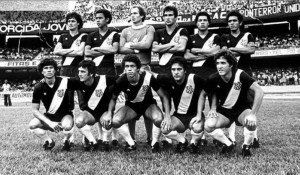 Fantastic season: they were second in the Sao Paulo championship and semi-finalists in the national championship! Standing from left: Zé Mário, Nenê, Carlos, Juninho, Odirlei, Toninho Oliveira;
Fantastic season: they were second in the Sao Paulo championship and semi-finalists in the national championship! Standing from left: Zé Mário, Nenê, Carlos, Juninho, Odirlei, Toninho Oliveira;
Crouching: Édson, Marco Aurélio, Chicão, Dicá, Osvaldo.
Not a bad team, but let’s face it: Ponte Preta (Campinas) hardly is the name coming to mind, when one thinks of Sao Paulo football. But they did much better than the best clubs – better than Sao Paulo, Santos, Portuguesa. Corinthians, with all their great players, was eliminated long, long ago – Ponte Preta was eliminated only by the rules, not on the pitch!
 Botafogo (Rio de Janeiro) also cannot be blamed – they were eliminated by the rules too. A case to be sorry, not angry. May be not even sorry, for there was a sweet moment at the ¼ finals: they eliminated Flamengo, which counts highly in Rio de Janeiro – often to beat a rival is better than winning a title.
Botafogo (Rio de Janeiro) also cannot be blamed – they were eliminated by the rules too. A case to be sorry, not angry. May be not even sorry, for there was a sweet moment at the ¼ finals: they eliminated Flamengo, which counts highly in Rio de Janeiro – often to beat a rival is better than winning a title.
And at last the first leg of the final was played on April 30. Gremio hosted and won 2-1 after 2 goals by Paulo Isidoro. Serginho scored for Sao Paulo and kept the dream alive – one goal difference is not much when the most important match is at home. So is the usual wisdom. Sao Paulo did not score at all on May 31, but Gremio did, thanks to Baltazar. A second victory and the title was theirs.
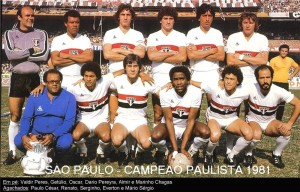 Sao Paulo ended with silver – which, for them, translates ‘ended empty handed’. How good or bad they were? Hard to tell, for Brazilian football – unlike the European – rarely concentrated all superstars in 2-3 teams. Typically, a strong Brazilian team had 5-6 great players – and the competition had the same number. Sao Paulo was typical – Renato, Francisco Marinho Chagas, Oscar, Valdir Peres, Serginho. Corinthians had that many – and look where they ended. Flamengo had that many, so a few other teams, including the champions.
Sao Paulo ended with silver – which, for them, translates ‘ended empty handed’. How good or bad they were? Hard to tell, for Brazilian football – unlike the European – rarely concentrated all superstars in 2-3 teams. Typically, a strong Brazilian team had 5-6 great players – and the competition had the same number. Sao Paulo was typical – Renato, Francisco Marinho Chagas, Oscar, Valdir Peres, Serginho. Corinthians had that many – and look where they ended. Flamengo had that many, so a few other teams, including the champions.
 Gremio (Porto Alegre) – champions of Brazil! What could be better? First national title – not only great by itself, but also restoring Gremio among the top clubs of the country. Porto Alegre was leading Brazilian football during the 1970s, but it was thanks to the rivals, Internacional. Now Gremio bested all and Inter was nowhere to be seen. True, the arch-enemy had more titles, but the present – and perhaps the future – belonged to Gremio. Leao, Paulo Isidoro, Baltazar, the Uruguayan star De Leon… Gremio had the usual for a Brazilian team number of stars – may be even a bit fewer and on lower scale than other clubs, but the chemistry worked and they won. And a bit of football trivia and irony: the bad boy Emerson Leao, who quarelled with everybody, and was unable to stay in one club for long because of his temper, was already twice Brazilian champion (three times, if the unofficial 1969 championship is counted) – Zico was champion only once, Socrates – not at all, Pele – plain zero. Yes, Leao was the best goalkeeper of the 1970s and early 80s, but there were much bigger stars who won nothing on national scale. Anyway, it was no Leao’s victory, but of the whole team.
Gremio (Porto Alegre) – champions of Brazil! What could be better? First national title – not only great by itself, but also restoring Gremio among the top clubs of the country. Porto Alegre was leading Brazilian football during the 1970s, but it was thanks to the rivals, Internacional. Now Gremio bested all and Inter was nowhere to be seen. True, the arch-enemy had more titles, but the present – and perhaps the future – belonged to Gremio. Leao, Paulo Isidoro, Baltazar, the Uruguayan star De Leon… Gremio had the usual for a Brazilian team number of stars – may be even a bit fewer and on lower scale than other clubs, but the chemistry worked and they won. And a bit of football trivia and irony: the bad boy Emerson Leao, who quarelled with everybody, and was unable to stay in one club for long because of his temper, was already twice Brazilian champion (three times, if the unofficial 1969 championship is counted) – Zico was champion only once, Socrates – not at all, Pele – plain zero. Yes, Leao was the best goalkeeper of the 1970s and early 80s, but there were much bigger stars who won nothing on national scale. Anyway, it was no Leao’s victory, but of the whole team.
